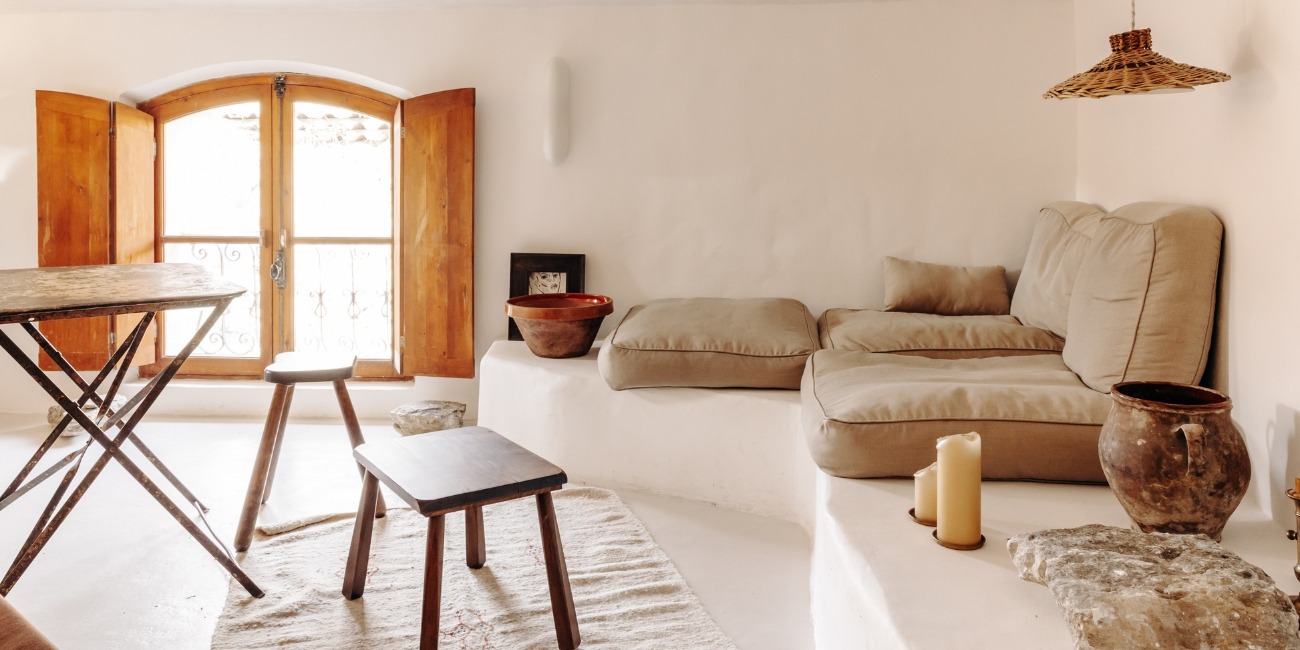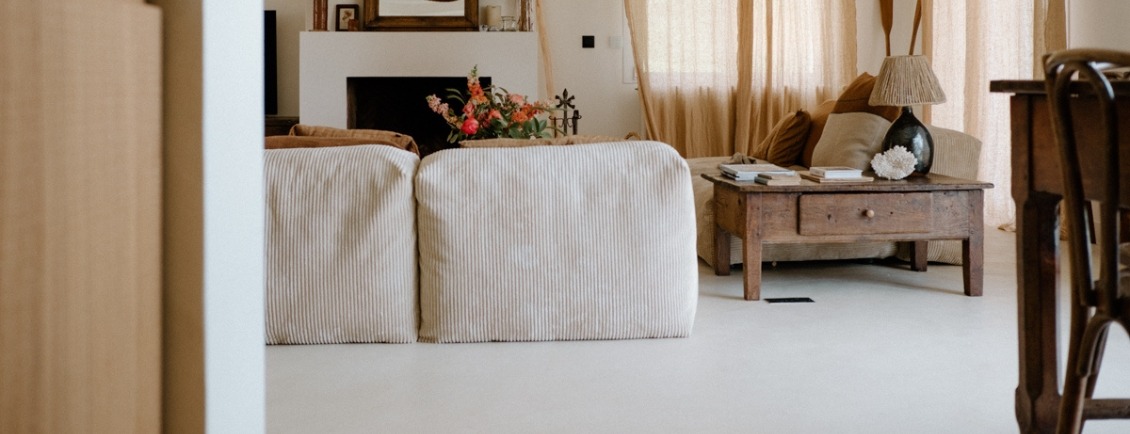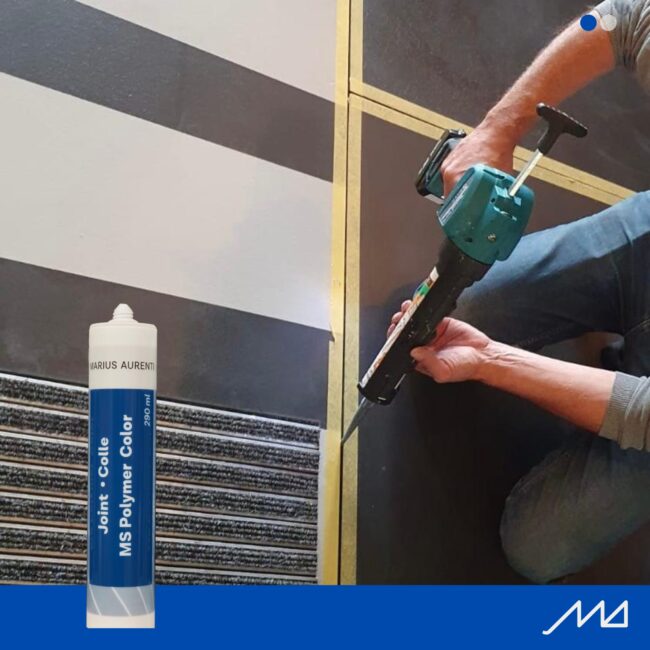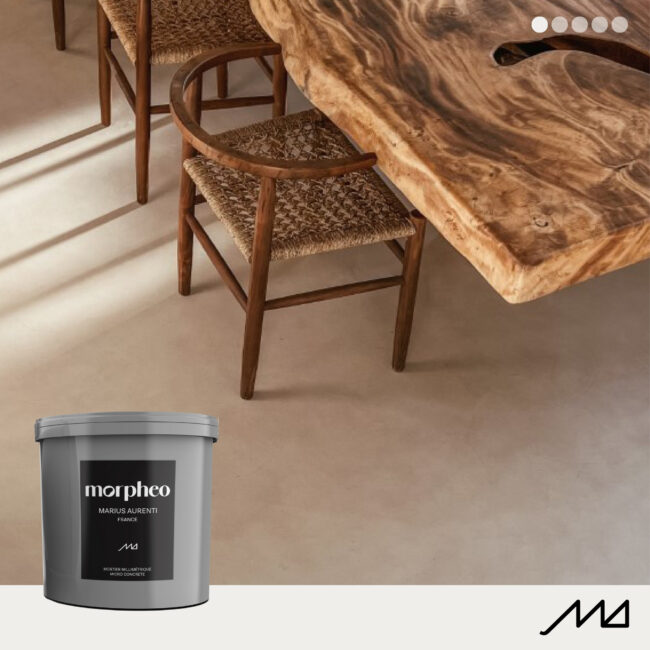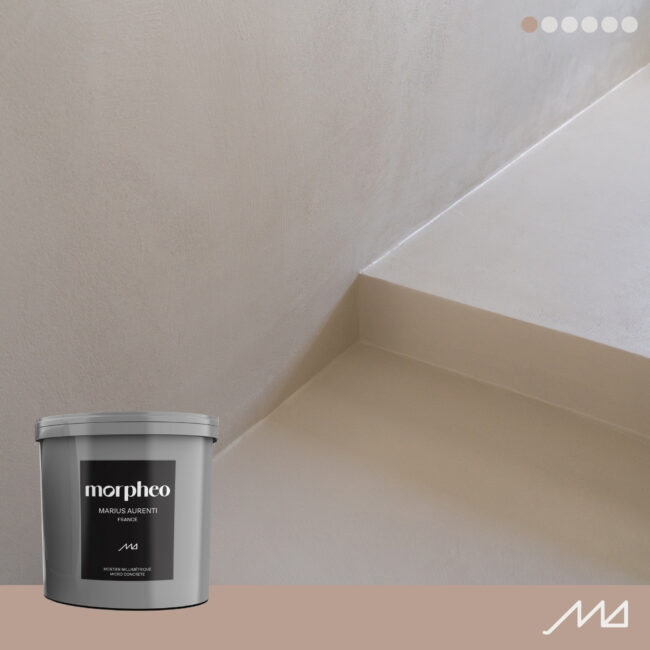Béton ciré “Classic”, 25 years of innovation for your floors, walls, bathrooms and terraces
What is micro concrete?
Millimetric Micro concrete is a warm, timeless, resistant material that has been a favorite in decorating since its invention (a world innovation) by Marius Aurenti in France over 25 years ago.
Composed mainly of French high-strength cements, quartz silica sand from French quarries, and specific additives, this innovative material is applied, generally in two coats, to substrates as diverse as concrete, tiles or plasterboard (only 2mm thick).
Micro concrete has many advantages. In addition to its durability and resistance to impact, abrasion, stains and moisture, it can be used to create seamless surfaces, giving a modern, uncluttered look.
This millimetric Micro concrete offers great freedom for customization, bringing every decorating project to fruition with performance and elegance.
Our showrooms and authorized distributors are on hand to provide technical support, show you staging solutions and help you choose the right colors.
Colour charts, catalogs and samples are also available directly from the
material library
.
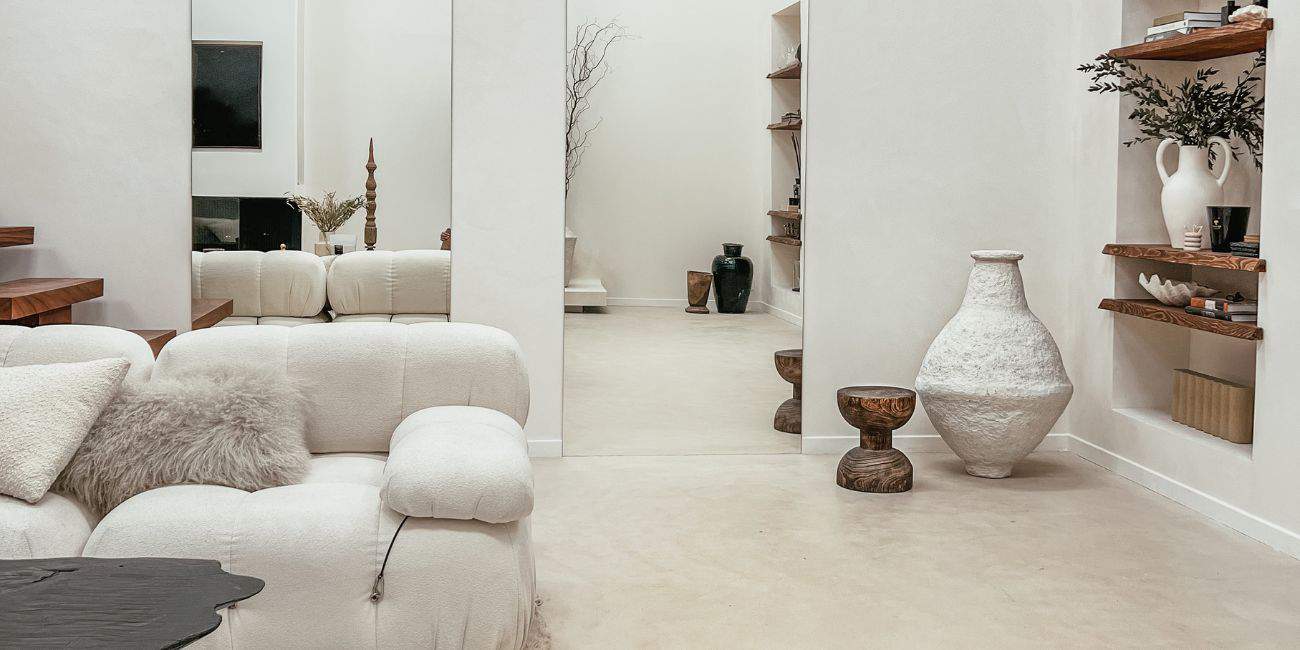
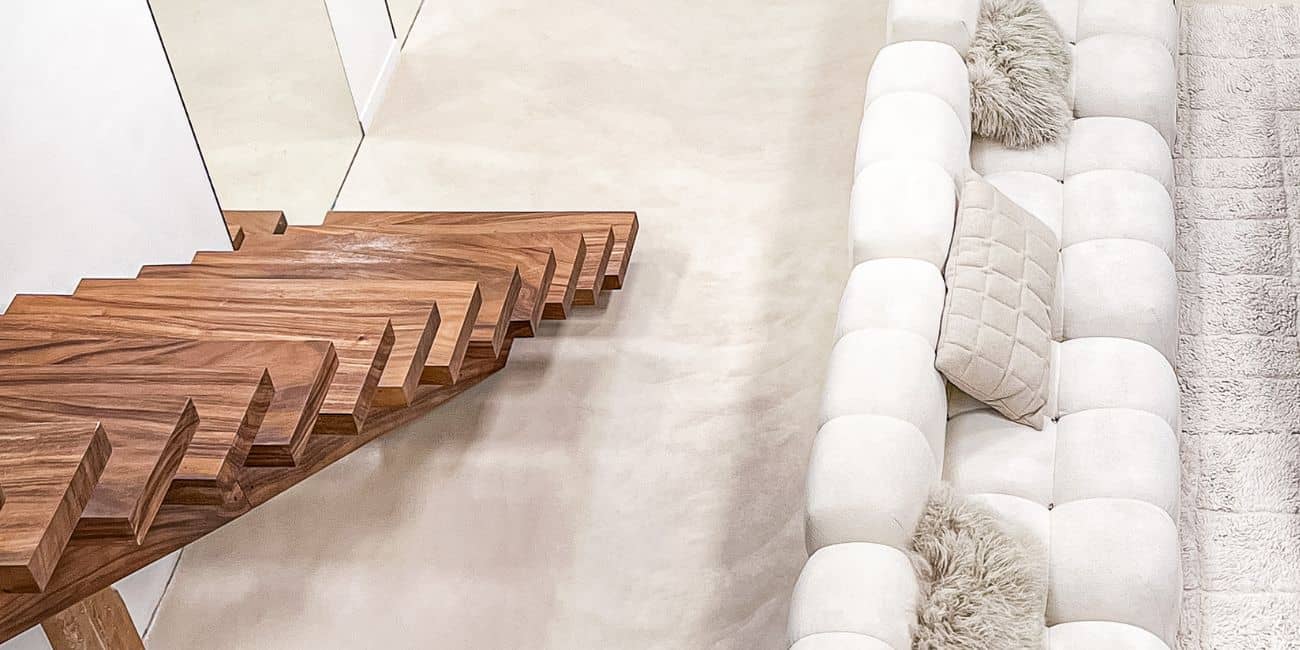
Marius Aurenti micro concrete
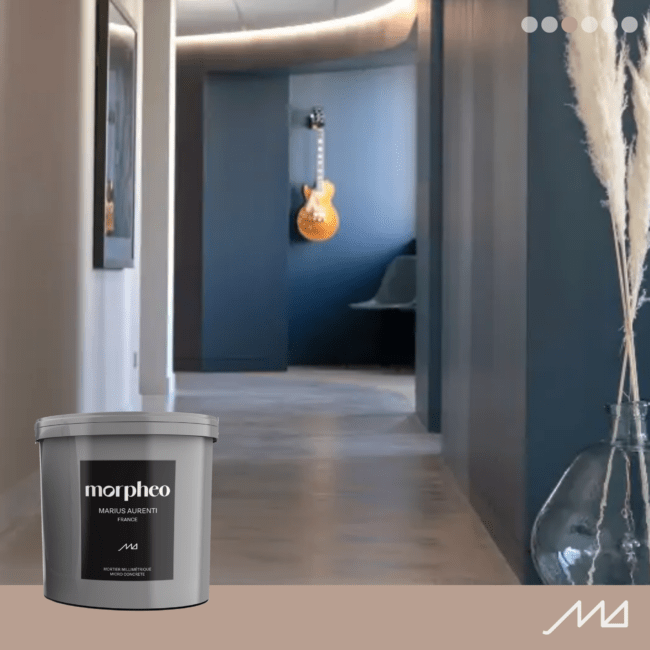
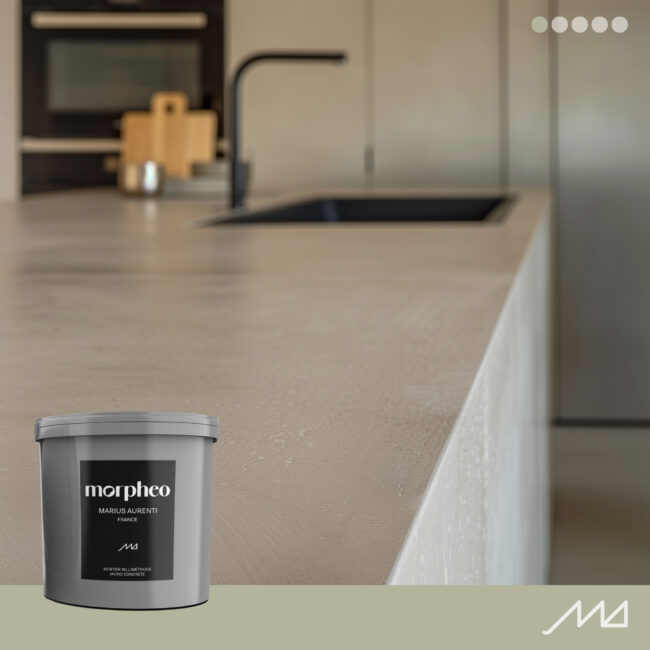
Why choose Marius Aurenti micro concrete?
Marius Aurenti, a French company founded in 1982, is the world pioneer and creator of a concrete formulation that reduces high-quality decorative concrete to just 2 mm thick.
Backed by 40 years’ experience in public buildings, the implementation of this innovative concrete material has been accompanied by highly specialized professional training courses for craftsmen and construction companies. This approach, which began in the 90s, gave rise to the first network of companies qualified in the application of micro concrete.
Today, these independent, expert teams have completed thousands of projects in France and around the world (see references). They support your new-build and renovation projects, from bathrooms to major public works.
Choosing Marius Aurenti micro concretemeans choosing an established, serious and attentive company whose micro concrete has proven itself on thousands of projects carried out by a network of qualified professionals.
The contact request forms will put you in touch with the professional teams who can meet your technical, time and location requirements.
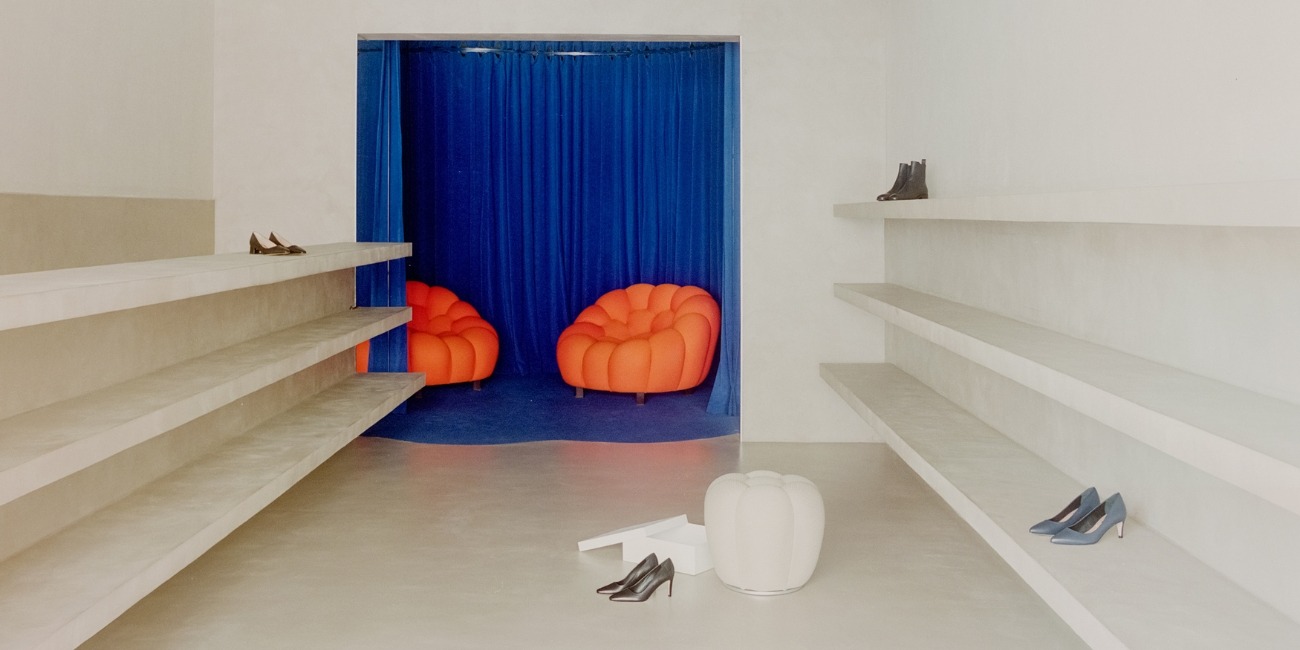
The 7 advantages of Marius Aurenti micro concrete
2mm thick
Absolute finesse: 25 times thinner than a screed, 50 times thinner than a slab, concrete becomes light, beautiful and resistant.
44MPa
Twice the compressive strength of a screed, with a load-bearing capacity of up to 450 kg/cm².
71 mineral colors
UV-resistant, deep shades thanks to exclusive BLUSH technology. You get long-lasting colors made from mineral pigments with factory-controlled precision.
Without special seals
Extended surfaces with no specific joints… Material flows from room to room, enhancing an enlarged space. Only underpinning joints are necessary and must be respected.
15-year crack-free warranty
MA’s 15-year guarantee against cracking is the result of its exclusive formula and the experience of thousands of completed projects.
A genuine guarantee of a benchmark brand, it is unique on the market for “Expert” qualified craftsmen.
A range of high-resistance varnishes from matt to gloss
MA’s varnishes are renowned for their chemical and mechanical resistance. Tested by the CSTB, they are the result of 35 years’ experience in protecting public works: subways, high schools, monuments… Get protection that’s adapted to your private or professional use, and easy to maintain.
Finishes: matte, silk matte, satin and gloss.
Smooth to non-slip textures
Whether you’re looking for a very soft, minimalist effect or a rough, industrial, distressed application, the product ranges and finishes allow you to play with decorative effects and textures, from the smooth grain of a worktop to a slip-resistant surface rated PN24 and PC20.
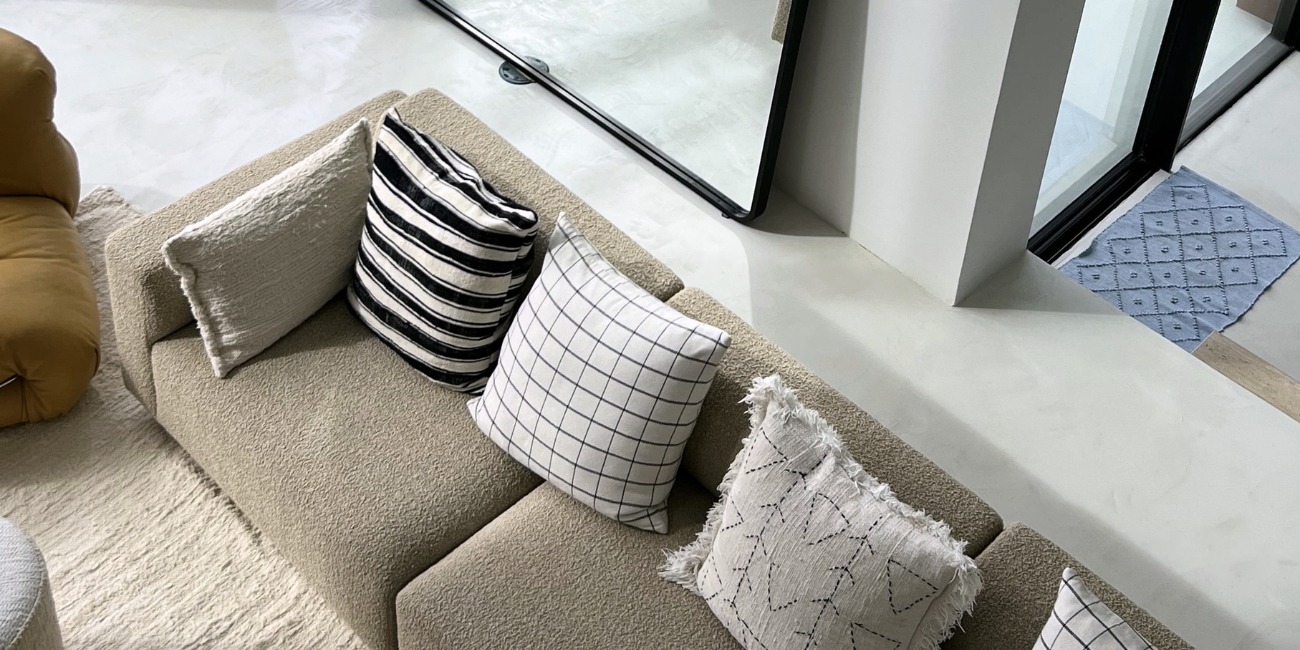
71-color concrete color chart
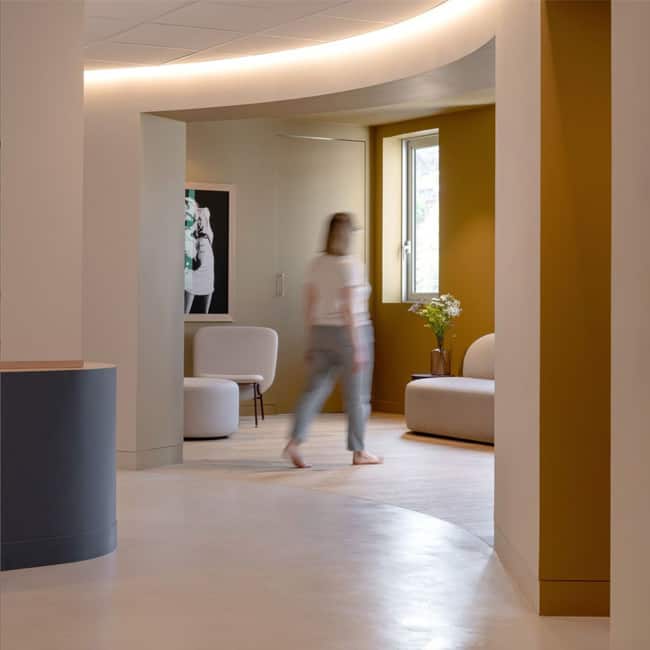
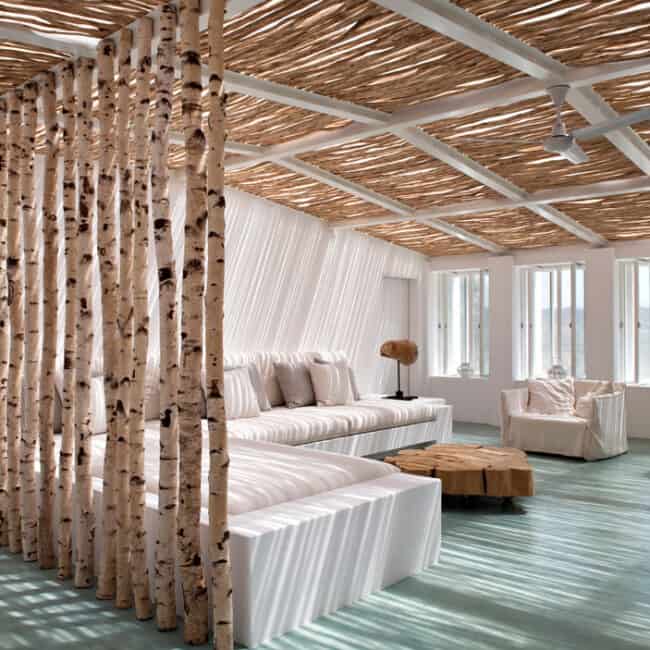
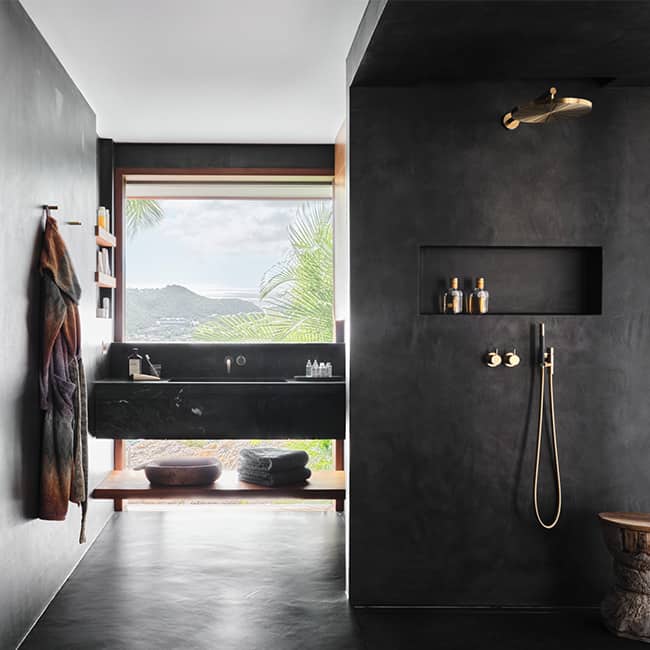
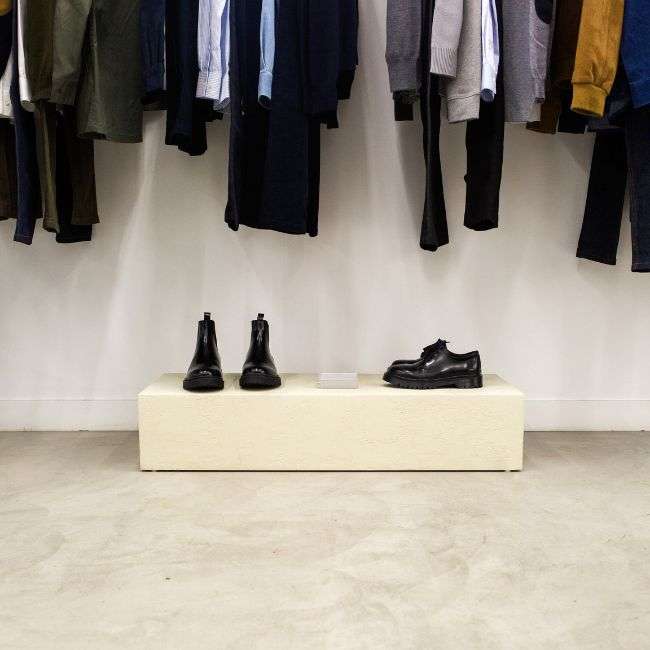
Micro concrete for floors, walls and furniture
Micro concrete offers remarkable versatility in terms of application surfaces.
Marius Aurenti micro concrete (Classic / Smooth finish mortar) can be applied to floors (screeds with or without heating and slabs) and walls in the following areas
kitchens, bathrooms, walk-in showers, on the work plans and basins, on furniture and even outdoor on a terrace, a pool deck, etc…
Its ability to adapt to different surfaces makes it an ideal choice for creating a harmonious, modern aesthetic in a variety of spaces.
Micro concrete for interior floors
Marius Aurenti micro concrete (Classic / Smooth finish mortar) can be applied to screed floors (cement or anhydrite), with or without heating, on slabs or for renovation over old tiles.
Micro concrete is particularly suitable for floors, thanks to its resistance to impact, abrasion and protection by a high-resistance varnish.
At just 2mm thick, it can be used to create surfaces with no specific joints and no cracking (15-year warranty), offering a warm, modern look. Created over 25 years ago, this concrete is the market benchmark, chosen by the biggest names in architecture.
A preliminary visit by an approved professional company will enable us to assess the quality of the substrate and give you a detailed price.
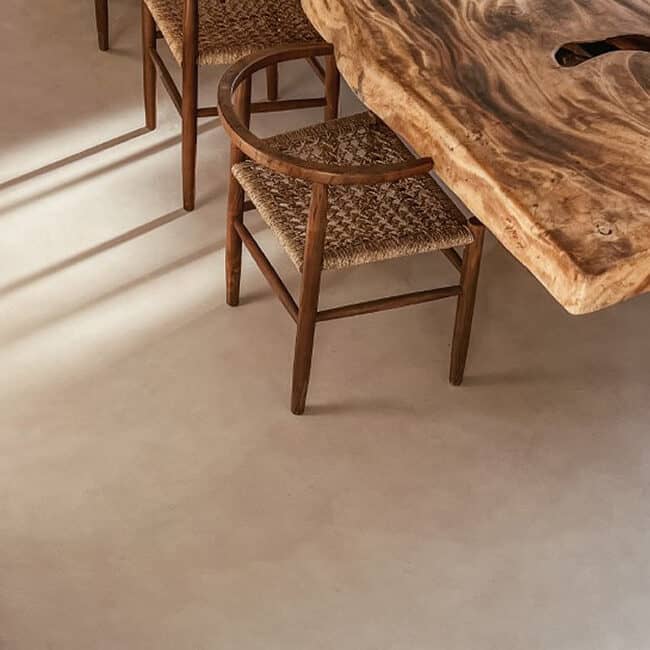
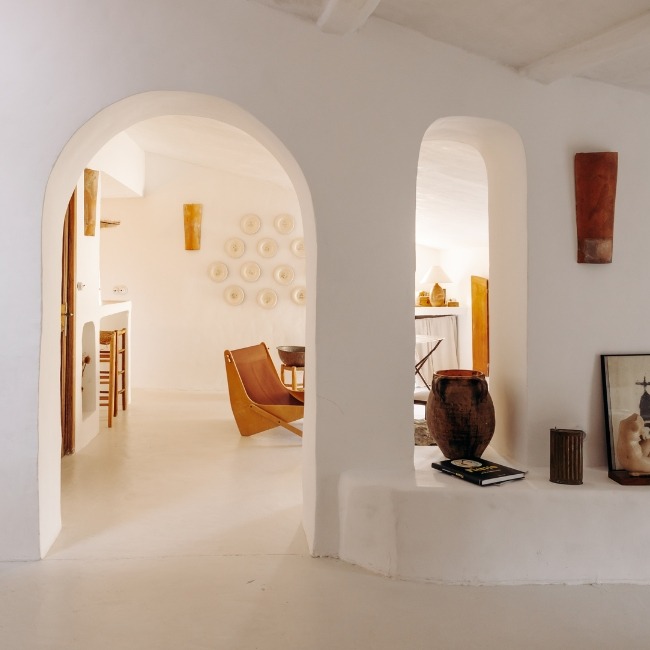
Micro concrete for walls
Wall concrete is an elegant solution for creating deep, contemporary wall decoration.
It is available in a smooth finish (Minimal version) and in a Textured version for a rough concrete finish with the charm of its imperfections.
Easy to apply thanks to its long open time, it gives a contemporary look to the interior of your space, offering a wide color palette of 71 colors, and can be protected with a simple or reinforced varnish for public spaces.
Micro concrete for showers and bathrooms
Micro concrete is often used for walk-in showers, both inside the shower area and on bathroom floors and walls.
A waterproofing preparation is carried out in preparation, then the micro concrete is laid and protected with professional bathroom-specific varnishes.
A perfect solution for showers, offering a waterproof, moisture-resistant and easy-to-clean surface.
Its smooth, seamless appearance creates a modern, spa-like ambience in the bathroom, adding a touch of sophistication to your shower space.
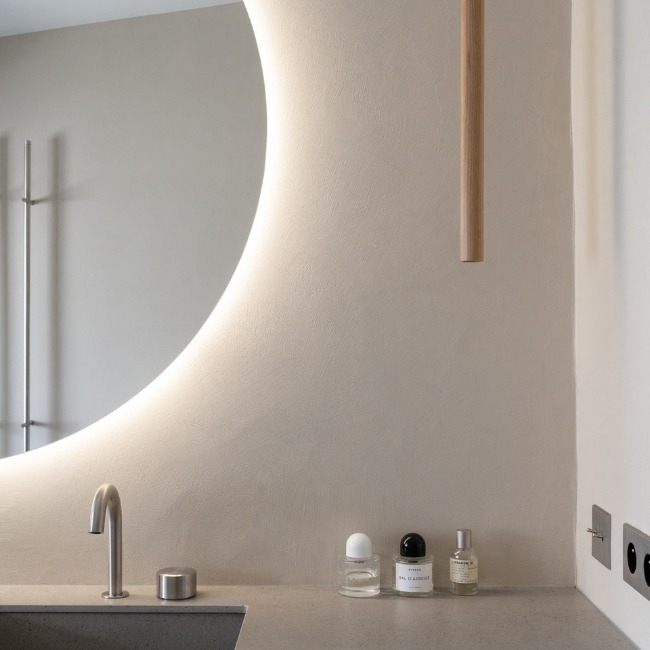
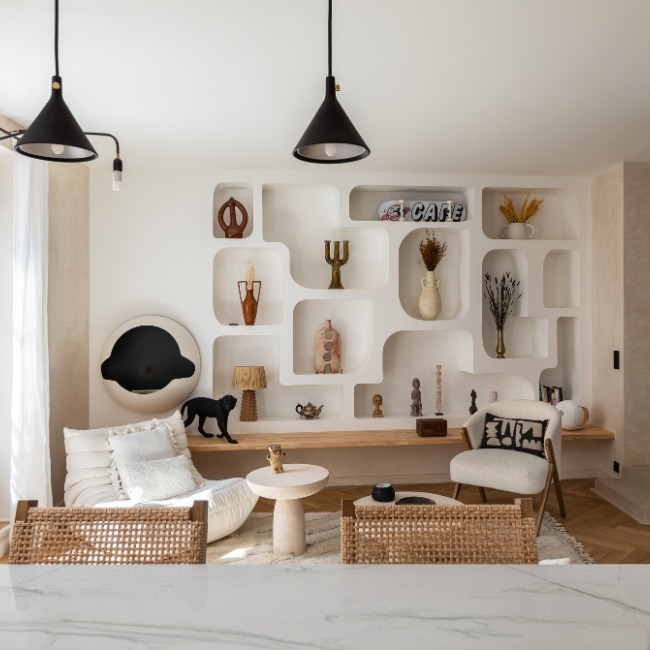
Micro concrete for shop fittings and furniture
Whether on tables, counters or shelves, micro concrete provides a smooth, long-lasting finish, creating unique, hard-wearing pieces of furniture for your interior decoration, catering, retail, displays, furniture, etc…
This can be done on site or in Marius Aurenti’s workshops, which support brands and store networks with concrete furniture.
Micro concrete for worktops
Micro concrete for worktops creates a beautiful, continuous surface and protects itself specifically by becoming resistant to stains, moisture and daily wear and tear.
In addition to its durability, it offers a smooth, elegant surface that adds a contemporary touch to the kitchen or bathroom, while being easy to maintain.
With French manufacturer Marius Aurenti, you can simply order your decorative concrete worktop in one of the 71 colors on the color chart. Tailor-made study possible.
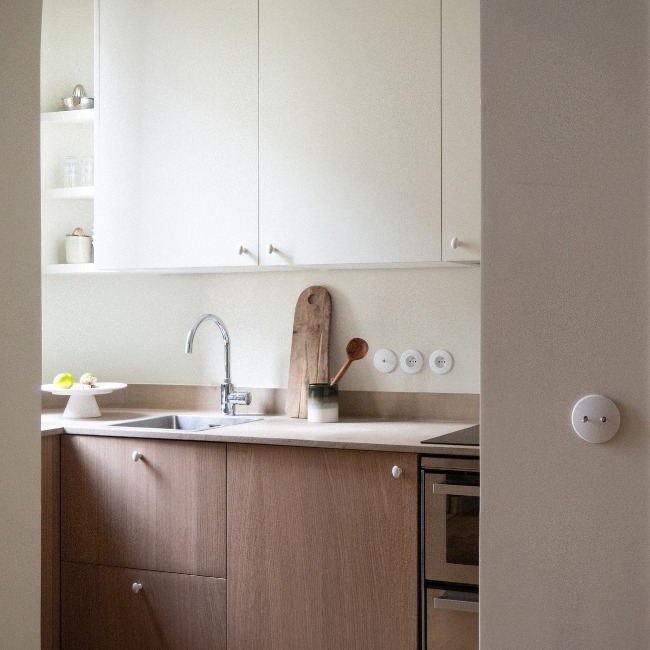
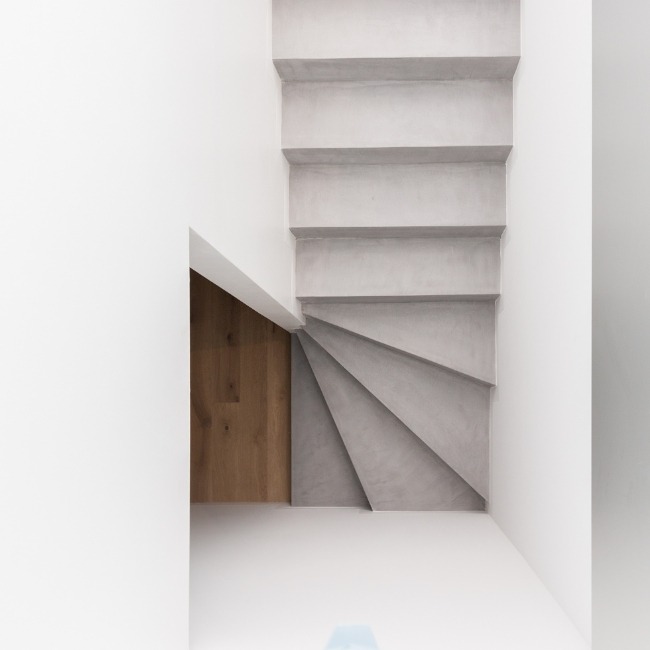
Micro concrete for stairs
The application of micro concrete on staircases enables a graphic expression to be created, emphasizing the monobloc line of a staircase or creating steps that are sometimes suspended. It can be installed on concrete staircases, on old tiles or with factory-created shapes installed on site.
Texture, finish and color are all specially designed for this work. Marius Aurenti’s social networks feature many of the company’s creations.
Micro concrete for terraces and pool decks
Marius Aurenti responds to the extremely demanding needs of terraces and pool decks with materials that are particularly UV-resistant.
Marius Aurenti also has the technical certificates to deal specifically with the anti-skid requirements of poolside applications.
A protective treatment is also applied and is perfectly suited to terraces.
Please note that outdoor terrace projects can only be carried out on concrete slabs meeting the requirements of DTU 13.3. This enables us to build structures in both tropical and mountain environments.
Our professional teams will be happy to help you with these projects, which often extend indoor flooring outdoors in an infinite style that’s so pleasant to walk on barefoot.
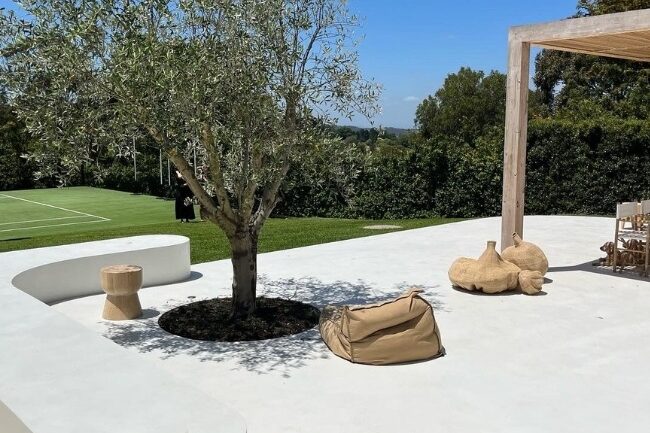
micro concrete FAQ
How to lay micro concrete?
Installing micro concrete requires precise expertise. Marius Aurenti recommends using authorized applicators trained by Marius Aurenti. Their expertise and Marius Aurenti’s confidence in them guarantee a successful, high-quality installation.
Contact an advisor to find an expert craftsman or request a free quote.
Can micro concrete be applied to existing tiles?
It is possible to apply micro concrete over existing tiles. However, every project is unique. We recommend that you request a free quote to assess the specifics of your situation and obtain personalized recommendations.
What colors are available for micro concrete?
The IRIS color chart is common to all materials.
Matières Marius Aurenti offers 71 mineral colors of micro concrete to meet all your aesthetic needs. The mineral pigments are finely ground and give a particularly deep, UV-stable reproduction of light over time.
Distributors and showrooms will present these in real life and on samples to help you with your projects. To help you in your decision, samples and color charts are available to order from the matériauthèque or online on your screen (subject to availability).
The company also works with architects and colorists to create customized colors for your projects.
Is micro concrete suitable for bathrooms and kitchens?
Yes, micro concrete is perfect for bathrooms and kitchens. Its resistance to water and stains makes it ideal for these spaces.
To find out the specific details of your project and obtain a precise estimate, we invite you to request a free quotation. Our experts will be happy to help you with your project
How durable is micro concrete?
Marius Aurenti’s micro concrete is renowned for its exceptional durability. We back our Classic micro concrete with a 15-year non-cracking warranty, covering intrinsic cracks. This guarantee is backed by our civil liability insurance. It covers both the material and its application, in compliance with Marius Aurenti protocols, carried out by qualified professionals. So you can be sure of the strength and longevity of our micro concrete.
How do I repair damage to a micro concrete surface?
On micro concrete, heavy objects generally cause the material to sink. Sometimes this can damage the varnish film. This can be remedied by applying several coats of varnish.
Rarely, it may cause a burst of material. A local application of micro concrete may be considered. To avoid the “patch” effect, a tinted product (repair cream / mineral stain) can be applied to effectively mask the repair.
How do you maintain and clean micro concrete on a daily basis?
Known for the quality of its treatments for public works, Marius Aurenti has developed concrete protection treatments for high protection, whether for residential use of micro concrete or in public spaces such as hotels, stores and restaurants.
To thoroughly clean soiled surfaces, apply Multi-Purpose Degreaser Cleaner diluted to 10% once or three times a year, then rinse with water. A soft brush can be used to clean the pores of the concrete.
How do I renovate my micro concrete?
After several years of use of a concrete floor, generally between 5 and 15 years, it will be necessary to redo the protective layers and start again for another decade!
Depending on the type of protection in place, here’s how to renovate it:
- Concrete floors with wax: every 5 years or so (depending on the desired appearance and patina of the floor), strip with MA’s Stripper. On a clean, dry surface, apply 2 coats of High Resistance Wax.
- Varnished concrete surfaces (floors, showers, worktops): every 5 to 15 years (depending on wear), use Multi-Purpose Degreaser Cleaner diluted to 10%, then rinse with water. Lightly sand the surface with a single-brush or orbital sander (grit over 120), remove dust and apply 2 new coats of varnish.
- Exterior concrete terraces: every 2 to 5 years, apply Multipurpose Degreaser Cleaner diluted to 10%, then rinse with water. On a dry surface, apply 2 coats of Impregnation Terrasse N°2.
Our authorized distributors, showrooms and sales teams will be happy to advise you on these aspects, as our products are permanently in stock and have been in use for years.
Technical data sheets (PDF version)
Technical data sheets (web version)
Presentation
High-performance, millimetric hydraulic mortar for “micro concrete” coatings for interior and exterior decoration (floors, walls, bathrooms, worktops, objects, etc.).
Created over 25 years ago, this product was the world’s first millimetric micro concrete, an innovation made in France that has already been used to create hundreds of thousands of square meters.
It offers excellent chemical, mechanical, adhesion and waterproofing resistance.
Available in 71 colors (Blush Concentré Couleur Minérale).
This product forms the base layer of the Marius Aurenti micro concrete system (see System Data Sheet, next page). The choice of preparation coat (primer) and topcoat (varnish, impregnation or wax) must be adapted to the use and location.
A maintenance manual sets out recommendations for different finishes and uses.
Packaging
Kit of 3 components:
- Base blanche Béton Ciré Classic composant A / 18.8 kg
- Liquid Béton Ciré Classic component B / 5.32 kg
- Blush Concentré Couleur Minérale / 1.2 kg
The 7 key advantages of Marius Aurenti micro concrete :
- Without special seal
- 15-year crack-free warranty
- A range of high-resistance varnishes from matt to gloss
- Smooth to non-slip textures
- 71 mineral colors
- 2 mm thick
- 44MPa
System plug
Features
The Marius Aurenti M3D System includes :
- a base preparation coat
- a mass coat
- a finishing coat
Refer to their respective Technical Data Sheets and Safety Data Sheets.
| Support | Trade name | Number of coats | Total consumption | |
| Substrate preparation | New and old hydraulic substrates | Porous Floor Primer | 1 to 2 coats depending on substrate porosity | 100 to 200g/m² depending on substrate porosity |
| Tiling | EPX2 Superior primer + SQ10 | 1 to 2 coats depending on substrate | 1 to 1.5 kg/m² EPX Superior primer 1 to 1.5 kg/m² sand | |
| Wood derivative (chipboard, medium, plywood, etc.) | Wall Primer | 1 coat | 100 to 120 ml/m² wall primer | |
| Mass layer | New and old hydraulic substrates Tiling Wood derivatives (chipboard, medium, plywood, etc.) | Morpheo Mortier millimétique Décoratif | 2 to 3 coats | from 2kg/m² to 4 kg/m². (see consumption table P10) |
| Protective layer | / | Bouche Pore n°5 + Varnish n°7 Visco or Fixative IF3 | 2 coats or ≥ 3 coats | 100 to 250 g/m² 250 to 300 g/m² 300 to 430 g/m² minimum |
The Béton Ciré Classic + Blush Concentré Couleur Minérale System is available in 71 colors from the Marius Aurenti IRIS Color Chart.
Permissible substrates
The diversity of substrates and their conditions calls for specific preparation and primers.
Consult our Technical Data Sheets.
Substrates must be sound, flat, dry, rigid and cohesive, stable and clean (especially free of grease, oil or laitance).
They must be carried out in accordance with current DTU standards. It is important that the substrate be cohesive and free of cracks.
Active cracks and expansion joints will be left open and will not be covered. They will be treated with MS Polymer Color Marius Aurenti after the Classic micro concrete has been applied.
Concrete and screed substrates must be at least 28 days old. They must be level, cohesive, clean and have a moisture content of < 4% or 0.5% for calcium sulfate-based fluid screeds.
1/ NEW HYDRAULIC BINDER-BASED SUBSTRATES
– Bonded concrete slabs or screeds meeting the specifications of NF DTU 26.2.
– Uncoupled or floating cement mortar slabs and screeds executed in compliance with NF DTU 26.2 specifications.
– Cementitious fluid screeds subject to Avis
Favourable technique/DTA in force for the intended field of use.
– Slab floors complying with DTU 21 (standard P18-201) with continuity on supports.
- Reinforced concrete slabs cast in situ
- Solid slabs cast on reinforced concrete pre-slabs
- Solid slabs cast on prestressed concrete slabs
– Ribbed floors with prestressed concrete (PC) or reinforced concrete (RC) joists and interlocking joists, with full slab distribution cast in situ with continuity on supports.
– Floors made up of honeycomb slabs in BP or BA with reinforced concrete slabs with continuity on support and with crack control as defined in NF DTU 23.2.
Laying on fiber-reinforced or non-fiber-reinforced hydraulic screed is excluded.
The substrate must be insulated from the ground and capillary action from below and around the edges.
2/ SLABS, CONCRETE FLOORS OVER CRAWL SPACES AND CONCRETE FLOORS CAST OVER NEW STEEL TROUGHS.
Concrete slabs and concrete floors over crawl spaces must be laid in compliance with standard NF P 11-213 (DTU 13.3); they must be reinforced in compliance with the same DTU.
– Concrete floors poured on steel tanks with continuity must be executed in compliance with standard NF P 18-201 (DTU 21).
When applying to a helicopter-smoothed surface (concrete slab), it is essential to mechanically resurface the surface first, to ensure optimum adhesion of the primer and then of Marius Aurenti Micro Concrete.
3/ CALCIUM SULFATE-BASED FLUID SCREEDS
– Calcium sulfate-based fluid screeds must be installed and approved in accordance with the current Avis Technique and the “Cahier des Prescriptions Techniques d’exécution des chapes fluides à base de sulfate de calcium” (e-cahier du CSTB 3578_V2).
4/ OLD CAST SYNTHETIC RESIN FLOOR COVERINGS
– Old cast synthetic resin floor coverings meeting the requirements of CPT 3716 – “Exécution des revêtements de sol coulés à base de résine de synthèse – rénovation”.
5/ OLD TILES, MARBLE
– Existing tiles in good condition, with good adhesion to the substrate (bonded tiles). Excluded are applications on outdoor tiles and paving.
In the case of tiled or marble substrates, after preliminary surfacing with a diamond sander, Marius Aurenti EPX2 Multi Primer must be used, applied as a mortar and then sanded down (consult the Technical Data Sheet).
6/ SUPPORTS IN DAMP ROOMS
For applications in damp rooms (e.g. bathrooms), S.E.L. (Système d’Etanchéité Liquide) waterproofing must be applied before the system is installed. Any junction between materials of different natures must first be treated with watertight flexible joints.
For shower applications, the substrate must have a slope of 2%.>
When installing on a WEDI shower tray previously sealed with the WEDI waterproofing system, a primer must be used:
- or EPX2 Superior Primer, applied as a mortar and then sandblasted. EPX2 superior primer gelling agent can be used if required. (Please consult the technical data sheets).
- or the TOP WEDI system (please consult the technical data sheet). TOP WEDI must be prepared before applying Marius Aurenti micro concrete to ensure good adhesion of the micro concrete.
Consult our teams.
7/ POOL AND POND SUPPORTS
For swimming pools and ponds, please refer to the Marius Aurenti swimming pool guide for specific substrate preparation and application methods.
8/ OTHER MEDIA
- Cellular concrete
- Gypsum wallboard (excluding floor)
- Cement slabs
- Bricks
- Breeze blocks
- Wood derivative (chipboard, medium, plywood, etc.)
Precautions
Colors and blends
To guarantee shade homogeneity, use the same component A batch number and the same Blush Concentré Couleur Minérale batch number for the same job.
Mineral Color Concentrate Blushes contain pigments, fillers and additives in different proportions to achieve a constant rheology (fluidity and consistency) of the final product. It is strictly forbidden to mix concentrates together.
Béton Ciré Classic bases are semi-finished materials. It is essential to add a concentrate to ensure that the properties of Classic Micro Concrete are fully preserved and the formula is stable. Even in white, the addition of a white Mineral Color Concentrate Blush is mandatory. Using the base alone without adding the concentrate alters the nature of the product and reduces the system’s chemical and mechanical performance.
The product must be used by strictly mixing the 3 components.
Never add water.
Uses
Sauna and hammam applications are excluded.
Do not apply to solid wood, softwood floors, plastics and textiles, unglazed terracotta, terracotta tiles and Fermacel fibre-gypsum boards.
Storage and safety
1 year in original, unopened packaging, out of direct sunlight and frost, at temperatures between +5° and 25°C, ideally between 15 and 20°C. Check the expiration date on the packaging before use. Once opened, the product must be used within 7 days.
Use appropriate personal safety equipment as described in Safety Data Sheets.
For further safety information, please consult the Safety Data Sheet.
Mixture preparation
Preparation is carried out using dry mixing (for multiple use of the kit) or wet mixing (for complete use of the kit).
Dry mixing
In the case of dry mixing, always mix base and concentrate in their entirety before dividing.
- Roll the base bucket to aerate and soften the material
- Open the base bucket and make a slight indentation in the center of the base.
- Shake and open the jar of concentrate
- Pour concentrate into center of base bucket
- Block the bucket with the feet and mix the base and concentrate (ideally with a mixer for pasty products; please consult us for prices).
- Immerse the mixer and gradually increase the speed.
- Continue mixing with straight and angled vertical and lateral movements to perfectly blend the contents. Insist on the edges at the bottom of the jar, so as not to forget those corners that are most difficult to mix. When mixing for the first time, we recommend pouring the mixed contents into a bucket of the same size, to visually check the quality of the mix and repeat if necessary. Mixing time must not be less than 1 minute
- Add component B (liquid) to the quantity of powder prepared: base (component A) + Blush Concentré Couleur Minérale perfectly mixed according to the table below:
COMPONENT B (liquid) in kg | COMPONENT A + BLUSH concentrate Mineral color (colored powder) in kg | Ready-to-apply product in kg |
| 0,21 | 0,79 | 1,00 |
| 0,42 | 1,58 | 2,00 |
| 0,63 | 2,37 | 3,00 |
| 1,26 | 4,74 | 6,00 |
| 2,66 | 10,00 | 12,66 |
| 5,32 | 20,00 | 25,32 |
Note: the shelf life of dry-mixed materials is not affected by mixing if the buckets (base + concentrate) are closed and stored under normal conditions.
Wet mix
- Pour the liquid part (component B, 5.32kg) into a clean, empty bucket
- Shake and open the jar of Blush Concentré Couleur Minérale
- Pour Blush Concentré Couleur Minérale into the liquid
- Block the bucket and mix at progressive speed until the liquid and concentrate are homogeneous.
- Add the powder (Component A) to the liquid.
- Mix mechanically for 2-3 minutes until homogeneous.
Never add water.
Implementation
Hydrometry
The Marius Aurenti Micro Concrete System should be applied at a relative ambient humidity of between 30% and 80%, except for varnishes which require a humidity range above 40% and below 80%, ideally between 50% and 65%.
Moisture conditions must be maintained for at least 48 hours after application of the last coat.
Protect from wind, direct sunlight, rain, frost and environmental influences during application and curing.
Before any application, check the moisture content of the substrate (maximum 4% moisture content and ≤0.5% for calcium sulfate-based fluid screeds).
Temperature
Before starting any application, it is essential to check the substrate and ambient temperatures. Substrate temperature must be between +5°C and +25°C (ideal temperature: > 15°C and 20°C).
It must be at least 3°C higher than the temperature corresponding to the dew point.
The Marius Aurenti micro concrete System can be applied at ambient temperatures between 5°C and 25°C for the micro concrete and between 15°C and 25°C for the varnishes, at least 24 hours before the first application and at least 24 hours after application of the last coat.
Low and high temperatures will respectively slow down and speed up setting. Do not apply in frosty or hot weather. Provide heating or cooling systems if necessary.
Application material
Smoothing trowel, 6 mm notched comb, triangular notch, (first coat only).
Parfait’Liss 35 cm or 200 mm stainless steel or plastic smoother.
Sponge float or mason’s sponge (dry) for a non-slip finish.
Clean tools with water.
Apply a first coat and, if necessary, a second coat of Ultra Fine micro concrete in a thin layer. These finishing coats determine the final grain of the coating and smooth it out. These coats are applied with a smoothing trowel in the same direction as the coats of Classic micro concrete or Fluid micro concrete.
It’s important to note that a stainless steel application tool can leave dark marks (especially on light colors). A plastic tool may be preferred.
After 24 hours drying time (at 20°C), sand the surface (grit 80 then 100 then 120) using an orbital sander (or a single-brush sander for floors), then dust using a vacuum cleaner.
Corners should be sanded by hand. The intensity of the sanding will finalize the surface appearance (grained or smooth) and bring out the material effects. If the surface is deemed satisfactory and compliant, proceed with the application of the protective coatings.
4 possible protections (refer to the Technical Data Sheets for these products) :
Interior protection:
- IF3 fixative
- Porous filler n°5 + varnish N°7 (combined use is mandatory to avoid whitening)
Exterior protection :
- Impregnation Terrace n°2
Consumption
| Destination | Detailed description | Consumption of micro concrete / m2 | Thickness | Surface area for 1 Kit + Blush |
| Dry decorative wall | Interior wall on smooth surface | 2 kg/m2 for 2 coats | approx 1 mm | 12m2 approx |
| Residential flooring | Screed with or without heating in residential premises | 3 kg/m2 for 2 coats | approx 1.5 mm | 8.5m2 approx |
| Intensive flooring and walls | Indoor or outdoor paving Flooring on ERP screed Old tiling on Epoxy Flooring and walls receiving water Outdoor wall on reinforced concrete (except seafront) Furniture | 4 kg/m2 for 2 coats | approx 2 mm | 6.5m2 approx |
| Pools and basins | Concrete only | 8 kg/m2 for 3 coats | approx 4 mm | 3.3m2 approx |
Drying time at 20°C and 60% relative humidity
| Open time | 25 to 30 minutes |
| Touch-dry | 4 hours |
| Between coats | 24 hours minimum |
| Completely dry | 2 days, but mechanical strength reached after 28 days |
Commissioning
The surface must not be exposed to the full range of stresses until the treatment system has fully dried, i.e. 7 days at 20°C and 60% relative humidity.
Between 2 days and 7 days, light traffic can be allowed, with the following precautions: microbreathable protective tarpaulins such as Landolt’s Floorliner Vapor, traffic in socks or overshoes. No exposure to water or chemical agents, no rubbing or scratching of furniture. It is forbidden to apply adhesives to coverings.
Do not lay carpet for 7 days.
VERY IMPORTANT NOTE:
- The maximum hardness of the Marius Aurenti Micro Concrete System is achieved after 28 days of drying.
- The floor must be handed over immediately after completion of the work. The freshly applied Marius Aurenti System must be protected from the work of other trades by protective materials that allow aeration (see Varnish n°7 Visco and Fixative IF3 Technical Data Sheet).
- Delay before first wet maintenance: 3 days minimum after application of Varnish n°7 or IF3 Fixative.
- Follow the instructions in the Marius Aurenti maintenance booklet
Certificate
Based on CSTB (Centre Scientifique Technique du Bâtiment) test reports, LNE (Laboratoire National de Métrologie et d’essais) test reports and Marius Aurenti laboratory test reports.
CSTB n° RA12-0208
CSTB n° RA20-0353
CSTB n° R2EM-11-26022578
CSTB n° R2EM-SIST-14-26047471
CSTB n°ES541200113
CSTB n° DSR-SIST-22-26085256
LNE n°CX 1600936
Matières Marius Aurenti declares that the Marius Aurenti Systems: Béton Ciré Classic and Béton Ciré Fluide with Marius Aurenti varnish finishes meet the following performance levels (pages 13-14-15), in accordance with the application recommendations.
STAIN RESISTANCE
(NF EN 423:2002)
| Index according to NF EN 423 | Test result after cleaning |
| 0 | Insensitive |
| 1 | Not very sensitive |
| 2 | Sensitive |
| 3 | Very sensitive |
| Flexural strength (NF EN 13892-2) | 16.8 N/mm² bending strength |
| Compressive strength (NF EN 13892-2) | 44.1 N/mm² compressive strength |
| Punching resistance (NF EN 13892-6) | 293.5 N/mm² resistance |
| Surface hardness (NF EN 13892-6:2003) | 119.1 N/mm² hardness |
| Wear resistance BCA (NF 13892-8:2003) | 0.08 mm |
| Impact resistance 1kg-200 cm (NF EN ISO 6272) | No cracking |
| Bond strength (NF EN 13892-8:2003) | 2.5 N/mm² Cohesive failure |
| Fire resistance (NF EN ISO 9239-1, NF EN ISO 13501-1 and NF EN ISO 11925-2) | Bf1-S1 (IF3, Visco n°7 and HR1) |
| Slip resistance (maximum values achieved depending on application) (XP P05-010 and XP P05-011) | PN 24 PC 20 |
| Water permeability (NF EN 1062-3:2003) | 0.08 kg/m².h0.5 |
| Determination of rolling of a chair with castors (NF EN 425 : 2012) 25,000 cycles, 21°C, 55% RH, Fixative IF3 | Residual traces in the area where castors pass |
Micro concrete + HR1 varnish
| Reagent exposure time | ||||
| Reagents | 5 minutes | 2 hours | 6 hours | 24 hours |
| Café | 0 | 0 | 0 | 0 |
| Tea | 0 | 0 | 0 | 0 |
| Oil (peanut) | 0 | 0 | 0 | 0 |
| Vinegar | 0 | 0 | 0 | 0 |
| Lemon juice | 0 | 0 | 0 | 0 |
| Red wine | 0 | 0 | 0 | 0 |
| Demineralized water | 0 | 0 | 0 | 0 |
| Sparkling water | 0 | 0 | 0 | 0 |
| Shoe polish (black)* | 0 | 0 | 0 | 0 |
| Cigarette crush* | 0 | 0 | 0 | 0 |
| Ammonia 15% of total | 0 | 0 | 0 | 0 |
| Acetone* | 0 | 0 | 0 | 0 |
Bleach – Sodium hypochlorite (solution 12%) | 0 | 0 | 0 | 0 |
Hydroalcoholic gel (ethyl alcohol 70%) | 1 | 2 | 3 (white spot) | 3 (white spot) |
Hydrochloric acid (20% solution) | 0 | 0 | 0 | 0 |
Potassium hydroxide (30g/L solution) | 0 | 0 | 0 | 0 |
Ammonium chloride (100g/L solution) | 0 | 0 | 0 | 0 |
Sodium hydroxide (10% solution) | 0 | 0 | 0 | 0 |
Acetic acid (5% solution) | 0 | 0 | 0 | 0 |
Acetic acid (10% solution) | 0 | 0 | 0 | 0 |
| Ballpoint* ink | 3 | 3 | 3 | 3 |
Micro concrete + IF3 fixative
| Reagent exposure time | ||||
| Reagents | 5 minutes | 2 hours | 6 hours | 24 hours |
| Café | 0 | 0 | 0 | 0 |
| Tea | 0 | 0 | 0 | 0 |
| Oil (peanut) | 0 | 0 | 0 | 0 |
| Vinegar | 0 | 0 | 0 | 0 |
| Lemon juice | 0 | 0 | 0 | 0 |
| Red wine | 0 | 0 | 0 | 0 |
| Demineralized water | 0 | 0 | 0 | 0 |
| Sparkling water | 0 | 0 | 0 | 0 |
| Shoe polish (black)* | 0 | 0 | 1 (darkens pores) | 1 (darkens pores) |
| Cigarette stubbing* (cigarette) | 1 (yellow spot) | 1 (yellow spot) | 1 (yellow spot) | 1 (yellow spot) |
| Ammonia 15% of total | 0 | 0 | 0 | 0 |
| Acetone* | 3 (white spot) | 3 (white spot) | 3 (white spot) | 3 (white spot) |
Bleach – Sodium hypochlorite (solution 12%) | 0 | 0 | 0 | 0 |
Hydroalcoholic gel (ethyl alcohol 70%) | 1 | 2 | 3 (white spot) | 3 (white spot) |
Hydrochloric acid (20% solution) | 0 | 0 | 0 | 0 |
Potassium hydroxide (30g/L solution) | 0 | 0 | 0 | 0 |
Ammonium chloride (100g/L solution) | 0 | 0 | 0 | 0 |
Sodium hydroxide (10% solution) | 0 | 0 | 0 | 0 |
Acetic acid (5% solution) | 0 | 0 | 0 | 0 |
Acetic acid (10% solution) | 0 | 0 | 0 | 0 |
| Ballpoint* ink | 3 | 3 | 3 | 3 |
Micro concrete + Varnish n°7
| Reagent exposure time | ||||
| Reagents | 5 minutes | 2 hours | 6 hours | 24 hours |
| Café | 0 | 0 | 0 | 0 |
| Tea | 0 | 0 | 0 | 0 |
| Oil (peanut) | 0 | 0 | 0 | 0 |
| Vinegar | 0 | 2 (darkens shade) | 2 (darkens shade) | 2 (darken shade) |
| Lemon juice | 0 | 0 | 0 | 0 |
| Red wine | 0 | 0 | 0 | 0 |
| Demineralized water | 0 | 0 | 0 | 0 |
| Sparkling water | 0 | 0 | 0 | 0 |
| Shoe polish (black)* | 0 | 0 | 0 | 0 |
| Cigarette stubbing* (cigarette) | 1 (yellow spot) | 1 (yellow spot) | 1 (yellow spot) | 1 (yellow spot) |
| Ammonia 15% of total | 0 | 0 | 0 | 0 |
| Acetone* | 1 (white spot) | 1 (white spot) | 1 (white spot) | 1 (white spot) |
Bleach – Sodium hypochlorite (12% solution) | 0 | 0 | 0 | 0 |
Hydroalcoholic gel (ethyl alcohol 70%) | 3 (darkens shade) | 3 (darkens shade) | 2 | 2 |
Hydrochloric acid (20% solution) | 0 | 1 (darkens shade) | 2 (darkens shade) | 2 (darken shade) |
Potassium hydroxide (30g/L solution) | 0 | 0 | 0 | 0 |
Ammonium chloride (100g/L solution) | 0 | 0 | 0 | 0 |
Sodium hydroxide (10% solution) | 0 | 0 | 0 | 0 |
Acetic acid (5% solution) | 0 | 0 | 0 | 0 |
Acetic acid (10% solution) | 0 | 2 (darkens shade) | 2 (darkens shade) | 2 (darken shade) |
| Ballpoint* ink | 3 | 3 | 3 | 3 |
(*): Study carried out on a panel of 12 recognized polishers in the micro concrete market.
From 2 hours exposure :
- Between 85% and 95% of varnishes on the market have vinegar or acetic acid stains (10% solution).
From 5 minutes of exposure :
- Over 65% of varnishes on the market show acetone stains
- More than 75% of varnishes on the market show cigarette stains
- 100% of varnishes tested are sensitive to ballpoint pen ink
CE mark of conformity, defined by Directive 93/68/EEC :
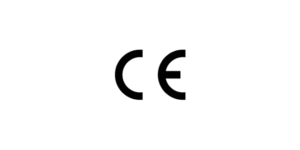
MA’s micro concrete
Reaction to fire: Bf1S1
Compressive strength: C40
Flexural strength: F15
Wear resistance: AR1
Bond strength: B2.0
Presentation
Areas of use
Indoor and outdoor decorative flooring
Composition
- Two-component hydraulic mortar
- Component A: powder, component B: liquid
Properties
Fast, easy application, 2 mm thickness, excellent mechanical strength, adhesion and waterproofing.
Packaging
- Local-mix Béton ciré Fluide 24.12 kg (2 components)
- Local-mix color concentrate 1.2 kg
Implementation
Substrate and substrate preparation
Perfectly coherent concrete and concrete derivatives (anhydrite screeds (calcium sulfate-based) or cement screeds, concrete slabs, screeds or slabs covered with old tiles), aerated concrete, tiles, marble, gypsum plasterboard (excluding flooring), cement board, bricks, breeze blocks, wood derivatives (chipboard, medium, plywood, etc.).
Do not apply to solid wood, softwood floors, plastics and textiles, terracotta and terracotta tiles.
1. New hydraulically-bonded substrates other than paving slabs, concrete floors over crawl spaces and concrete floors poured over troughs
- Bonded concrete slabs or screeds meeting the specifications of NF DTU 26.2.
- Uncoupled or floating cement mortar slabs and screeds executed in accordance with NF DTU 26.2 specifications.
- Cementitious fluid screeds subject to Avis
Favourable technique/DTA in force for the intended field of use. - Slab floors complying with DTU 21 (standard P18-201) with continuity on supports.
- Reinforced concrete slabs cast in situ
- Solid slabs cast on reinforced concrete pre-slabs
- Solid slabs cast on prestressed concrete slabs
- Ribbed floors with prestressed concrete (PC) or reinforced concrete (RC) joists and interlocking joists, with full slab distribution cast in situ with continuity on supports.
- Floors made up of honeycomb slabs in BP or BA with reinforced concrete slabs with continuity on support and with crack control as defined in NF DTU 23.2.
Laying on fiber-reinforced or non-fiber-reinforced hydraulic screed is excluded.
The substrate must be insulated from the ground and capillary action from below and around the edges.
2. Paving slabs, concrete floors over crawl spaces and concrete floors cast over new steel troughs
- Concrete slabs and concrete floors over crawl spaces must be laid in compliance with standard NF P 11-213 (DTU 13.3); they must be reinforced in compliance with the same DTU.
- Concrete floors poured on steel tanks with continuity must be executed in compliance with standard NF P 18-201 (DTU 21).
When applying to a helicopter-smoothed surface (concrete slab), it is essential to mechanically resurface the surface first, to ensure optimum adhesion of the primer and then of Marius Aurenti Micro Concrete.
3. Calcium sulfate-based fluid screeds
Calcium sulfate-based fluid screeds must be installed and approved in accordance with the current Avis Technique and the “Cahier des Prescriptions Techniques d’exécution des chapes fluides à base de sulfate de calcium” (e-cahier du CSTB 3578_V2).
4. Old cast synthetic resin floor coverings
Old cast synthetic resin floor coverings meeting the requirements of CPT 3716 – “Exécution des revêtements de sol coulés à base de résine de synthèse – rénovation”.
5. Old tiles
Existing tiles in good condition, with good adhesion to the substrate (bonded tiles).
Substrates must be sound, dry, rigid, stable and clean (especially free of grease or laitance). They must be carried out in accordance with current DTU standards. It is important that the substrate is free of cracks and has good cohesion. Active cracks and expansion joints will be left open and will not be covered by the finishing mortar. They will be treated with a flexible joint after the special floor fluid mortar has been applied.
Excluded are applications on outdoor tiles and paving.
The substrate must be insulated from the ground and capillary action from below and around the edges.
When applying to a helicopter-smoothed surface (concrete slab), it is essential to mechanically resurface the surface first, to ensure optimum adhesion of the primer and then of Marius Aurenti Micro Concrete.
The diversity of substrates and their conditions calls for specific preparation and, where necessary, the use of specific preparation products. Consult our teams.
For applications in damp rooms (e.g. bathrooms), S.E.L. (Système d’étanchéité Liquide) waterproofing must be applied before the system is installed. Any junction between materials of different natures must first be treated with watertight flexible joints.
For shower applications, the substrate must have a slope of >2%.
The diversity of substrates and their conditions calls for specific preparation and, where necessary, the use of specific preparation products. For full information, our teams are at your service.
Precautions and prohibitions
To guarantee uniformity of shade, use the same batch number for A components and the same batch number for color concentrates (Local mix) on the same job site.
Local mixes contain pigments, fillers and additives in different proportions to achieve a constant rheology (fluidity and consistency) of the final product.
It is strictly forbidden to mix concentrates together.
Local mixes are semi-finished materials. It is essential to add a concentrate to ensure that the properties of the micro concrete are integral and the formula stable. Even in white, the addition of a white concentrate in the corresponding color is mandatory.
Using the base alone without adding the concentrate (local mix) alters the nature of the product and reduces the system’s chemical and mechanical performance.
The product must be used by strictly mixing the 3 components. Never add water.
Mixture preparation
Dry mixing (for multiple use of the kit) or wet mixing (for complete use of the kit).
Dry mixing
In the case of dry mixing, always mix base and concentrate in their entirety before dividing.
- Roll the base bucket to aerate and soften the material
- Open the base bucket and make a slight indentation in the center of the base.
- Shake and open the jar of concentrate
- Pour concentrate into center of base bucket
- Block the bucket with the feet and mix the base and concentrate (ideally with a mixer for pasty products; please consult us for prices).
- Immerse the mixer and gradually increase the speed.
- Continue mixing with straight and angled vertical and lateral movements to perfectly blend the contents. Insist on the edges at the bottom of the jar, so as not to forget those corners that are most difficult to mix. When mixing for the first time, we recommend pouring the mixed contents into a bucket of the same size, to visually check the quality of the mix and repeat if necessary. Mixing time must not be less than 1 minute
- Add component B (liquid) to the quantity of powder prepared: base (component A) + Blush Concentré Couleur Minérale perfectly mixed according to the table below:
COMPONENT B (liquid) in kg | COMPONENT A + BLUSH concentrate Mineral color (colored powder) in kg | Ready-to-apply product in kg |
| 0,21 | 0,79 | 1,00 |
| 0,42 | 1,58 | 2,00 |
| 0,63 | 2,37 | 3,00 |
| 1,26 | 4,74 | 6,00 |
| 2,66 | 10,00 | 12,66 |
| 5,32 | 20,00 | 25,32 |
Note: the shelf life of dry-mixed materials is not affected by mixing if the buckets (base + concentrate) are closed and stored under normal conditions.
Wet mix
- Pour the liquid part (component B, 5.32kg) into a clean, empty bucket
- Shake and open the jar of Concentré
- Pour the Concentrate into the liquid
- Block the bucket and mix at progressive speed until the liquid and concentrate are homogeneous.
- Never add water
Implementation
Before any application, check the moisture content of the substrate (maximum 4% moisture content and ≤0.5% for calcium sulfate-based fluid screeds).
Hydrometry
Application must take place in a relative humidity range of between 30% and 80%.
Moisture conditions must be maintained for at least 48 hours after application of the last coat.
Protect from wind, direct sunlight, rain, frost and environmental influences during application and curing.
Temperature
Before starting any application, it is essential to check the substrate and ambient temperatures. Substrate temperature must be between +5°C and +25°C (ideal temperature: > 15°C and 20°C).
Low and high temperatures will respectively slow down and speed up setting. Do not apply in frosty or hot weather. Provide heating or cooling systems if necessary.
Application material
Smoothing trowel6 mm serrated triangular trowel.
Parfait’Liss 35 cm smoothing machine or equivalent.
Béton Ciré Marius Aurenti is a two-component mortar applied 2 mm thick.
Apply a first coat of micro concrete at a consumption of approx. 3 kg/m² (approx. 1.5 mm thick) using a trowel. To regulate thickness, the first coat can be applied with a 6 mm notched comb, then immediately smoothed with a smoothing trowel until the ridges on the notched comb disappear completely. In this case, smoothing must be carried out without delay, in the fresh micro concrete.
This first layer determines the final thickness and aesthetic effects.
Before applying the second coat and 24 hours after applying the first (at 20°C, 60% relative humidity), you can sand the surface (40 grit) using a single-brush machine (or orbital sander), then remove all dust mechanically.
Apply the second coat at a rate of approximately 1kg/m², using a trowel, then smooth.
This second layer determines the final grain of the coating.
It’s important to note that a stainless steel application tool can leave dark marks (especially on light colors). A plastic tool may be preferred.
After 24 hours drying time (at 20°C, 60% relative humidity), sand the surface (60-grit then 80-grit) using a single-brush machine (or orbital sander), then remove all dust mechanically.
The intensity of the sanding will finalize the surface appearance (grained or smooth) and bring out the material effects. If the surface is found to be in conformity, proceed with the application of finishes.
4 possible finishes (see product data sheets):
Interior finishes:
- IF3 fixative
- Porous filler n°5 + varnish N°7
- Porous filler n°5 + HR1 varnish
Exterior finish :
- Impregnation Terrace n°2
To avoid surface whitening, it is essential to use n°5 Porous Filler before HR1 and n°7 varnishes.
Consumption
Floors: 4 kg/m² for 2 coats (total thickness: 2 mm)
Drying time at 20°C and 60% relative humidity
| Open time | 25 to 30 minutes |
| Touch-dry | 4 hours |
| Between coats | 24 hours minimum |
| Completely dry | 2 days, but mechanical strength reached after 28 days |
Tool cleaning
Cleaning with water
Technical specifications and performance
Dry mixing
The Marius Aurenti M3D System includes :
- a layer of substrate preparation
- a mass layer
- a finishing coat
Refer to their respective Technical Data Sheets and Safety Data Sheets.
Maintenance
Follow the instructions in the Marius Aurenti maintenance booklet
Storage and safety
1 year in unopened original packaging, out of direct sunlight and frost, at a temperature between +5° and 35°C, ideally between 15 and 20°C. Check the expiration date on the packaging before use. Once opened, the product must be used within 7 days.
Use appropriate personal safety equipment as described in the safety data sheet.
All information contained in this data sheet is provided for information purposes only and does not engage our responsibility. Testing is necessary.
For further information on precautions for use and safety instructions, please refer to the safety data sheet.
3-component kit for floors, walls, bathrooms and furniture. For finishing surfaces in Classic or Fluid Micro Concrete (1kg/m²)
Presentation
High-tech mortar for finishing surfaces previously coated with Béton ciré Classic or Béton ciré Fluide in 2 mm thickness. It provides a perfectly aesthetic, extremely smooth finish with excellent stretch on floors, walls, bathrooms, worktops, objects, etc.
Available in 71 colors (Blush Concentré Couleur Minérale).
This product is a finishing coat that gives a smooth texture to Marius Aurenti Micro Concrete (see System Data Sheet on next page). The choice of primer (Béton Ciré Classic or Fluide) and protective coat (varnish, impregnation or wax) will depend on the application and the location.
A maintenance manual sets out recommendations for different finishes and uses.
Packaging
Kit of 3 components:
- Base blanche Béton Ciré Ultra Fin composant A / 18.8 kg
- Liquid Béton Ciré Classic component B / 5.32 kg
- Blush Concentré Couleur Minérale / 1.2 kg
System plug
Features
The Marius Aurenti M3D System includes :
- a layer of substrate preparation
- a mass layer
- a finishing coat
Refer to their respective Technical Data Sheets and Safety Data Sheets.
| Support | Trade name | Number of coats | Total consumption | |
| Substrate preparation | New and old hydraulic substrates | Porous Floor Primer | 1 to 2 coats depending on substrate porosity | 100 to 200g/m² depending on substrate porosity |
| Tiling | EPX2 Superior primer + SQ10 | 1 to 2 coats depending on substrate | 1 to 1.5 kg/m² EPX Superior primer 1 to 1.5 kg/m² sand | |
| Wood derivative (chipboard, medium, plywood, etc.) | Wall Primer | 1 coat | 100 to 120 ml/m² wall primer | |
| Mass layer | New and old hydraulic substrates Tiles Wood derivatives (chipboard, medium, plywood, etc.) | Morpheo Mortier millimétique Décoratif | 2 to 3 coats | from 2kg/m² to 4kg/m² |
| Protective layer | / | Bouche Pore n°5 + Vernis n°7 Visco or IF3 fixative | 2 layers or ≥ 3 layers | 100 to 250 gsm 250 to 300 gsm 300 to 430 g/m² minimum |
The Béton Ciré Classic + Blush Concentré Couleur Minérale System is available in 71 colors from the Marius Aurenti IRIS Color Chart.
Permissible substrates
Substrate and substrate preparation
Classic micro concrete or Fluid micro concrete without any finish, applied in 2 mm thickness. Before applying a coat of Ultra Fine micro concrete, you can sand the surface (80, 100 or 120 grit) or scrape off any ridges with an American knife, then vacuum away any dust.
Precautions
| Open time | 25 to 30 minutes |
| Touch-dry | 4 hours |
| Between coats | 24 hours minimum |
| Completely dry | 2 days, but mechanical strength reached after 28 days |
Colors and blends
To guarantee shade homogeneity, use the same component A batch number and the same Blush Concentré Couleur Minérale batch number for the same job.
Mineral Color Concentrate Blushes contain pigments, fillers and additives in different proportions to achieve a constant rheology (fluidity and consistency) of the final product. It is strictly forbidden to mix concentrates together.
Béton Ciré Classic bases are semi-finished materials. It is essential to add a concentrate to ensure that the properties of Classic Micro Concrete are fully preserved and the formula is stable. Even in white, the addition of a white Mineral Color Concentrate Blush is mandatory. Using the base alone without adding the concentrate alters the nature of the product and reduces the system’s chemical and mechanical performance. The product must be used by strictly mixing the 3 components. Never add water.
Uses
Sauna and hammam applications are excluded.
Do not apply to solid wood, softwood floors, plastics and textiles, unglazed terracotta, terracotta tiles and Fermacel fibre-gypsum boards.
Storage and safety
1 year in original, unopened packaging, out of direct sunlight and frost, at temperatures between +5° and 25°C, ideally between 15 and 20°C. Check the expiration date on the packaging before use. Once opened, the product must be used within 7 days.
Use appropriate personal safety equipment as described in Safety Data Sheets.
For further safety information, please consult the Safety Data Sheet.
Mixture preparation
Preparation is carried out using dry mixing (for multiple use of the kit) or wet mixing (for complete use of the kit).
Dry mixing
In the case of dry mixing, always mix base and concentrate in their entirety before dividing.
- Roll the base bucket to aerate and soften the material
- Open the base bucket and make a slight indentation in the center of the base.
- Shake and open the jar of concentrate
- Pour concentrate into center of base bucket
- Block the bucket with the feet and mix the base and concentrate (ideally with a mixer for pasty products; please consult us for prices).
- Immerse the mixer and gradually increase the speed.
- Continue mixing with straight and angled vertical and lateral movements to perfectly blend the contents. Insist on the edges at the bottom of the jar, so as not to forget those corners that are most difficult to mix. When mixing for the first time, we recommend pouring the mixed contents into a bucket of the same size, to visually check the quality of the mix and repeat if necessary. Mixing time must not be less than 1 minute
- Add component B (liquid) to the quantity of powder prepared: base (component A) + Blush Concentré Couleur Minérale perfectly mixed according to the table below:
COMPONENT B (liquid) in kg | COMPONENT A + BLUSH concentrate Mineral color (colored powder) in kg | Ready-to-apply product in kg |
| 0,21 | 0,79 | 1,00 |
| 0,42 | 1,58 | 2,00 |
| 0,63 | 2,37 | 3,00 |
| 1,26 | 4,74 | 6,00 |
| 2,66 | 10,00 | 12,66 |
| 5,32 | 20,00 | 25,32 |
Note: the shelf life of dry-mixed materials is not affected by mixing if the buckets (base + concentrate) are closed and stored under normal conditions.
Wet mix
- Pour the liquid part (component B, 5.32kg) into a clean, empty bucket
- Shake and open the jar of Blush Concentré Couleur Minérale
- Pour Blush Concentré Couleur Minérale into the liquid
- Block the bucket and mix at progressive speed until the liquid and concentrate are homogeneous.
- Add the powder (Component A) to the liquid.
- Mix mechanically for 2-3 minutes until homogeneous.
Never add water
Implementation
Hydrometry
The Marius Aurenti Micro Concrete System should be applied at a relative ambient humidity of between 30% and 80%, except for varnishes which require a humidity range above 40% and below 80%, ideally between 50% and 65%.
Moisture conditions must be maintained for at least 48 hours after application of the last coat.
Protect from wind, direct sunlight, rain, frost and environmental influences during application and curing.
Before any application, check the moisture content of the substrate (maximum 4% moisture content and ≤0.5% for calcium sulfate-based fluid screeds).
Temperature
Before starting any application, it is essential to check the substrate and ambient temperatures. Substrate temperature must be between +5°C and +25°C (ideal temperature: > 15°C and 20°C).
It must be at least 3°C higher than the temperature corresponding to the dew point.
The Marius Aurenti micro concrete System can be applied at ambient temperatures between 5°C and 25°C for the micro concrete and between 15°C and 25°C for the varnishes, at least 24 hours before the first application and at least 24 hours after application of the last coat.
Low and high temperatures will respectively slow down and speed up setting. Do not apply in frosty or hot weather. Provide heating or cooling systems if necessary.
Application material
Smoothing trowel, 6 mm notched comb, triangular notch, (first coat only).
Parfait’Liss 35 cm or 200 mm stainless steel or plastic smoother.
Sponge float or mason’s sponge (dry) for a non-slip finish.
Clean tools with water.
Apply a first coat and, if necessary, a second coat of Ultra Fine micro concrete in a thin layer. These finishing coats determine the final grain of the coating and smooth it out. These coats are applied with a smoothing trowel in the same direction as the coats of Classic micro concrete or Fluid micro concrete.
It’s important to note that a stainless steel application tool can leave dark marks (especially on light colors). A plastic tool may be preferred.
After 24 hours drying time (at 20°C), sand the surface (grit 80 then 100 then 120) using an orbital sander (or a single-brush sander for floors), then dust using a vacuum cleaner.
Corners should be sanded by hand. The intensity of the sanding will finalize the surface appearance (grained or smooth) and bring out the material effects. If the surface is deemed satisfactory and compliant, proceed with the application of the protective coatings.
4 possible protections (refer to the Technical Data Sheets for these products) :
Interior protection:
- IF3 fixative
- Porous filler n°5 + varnish N°7 (combined use is mandatory to avoid whitening)
Exterior protection :
- Impregnation Terrace n°2
Consumption
| Destination | Detailed description | Consumption of micro concrete / m2 | Thickness | Surface area for 1 Kit + Blush |
| Dry decorative wall | Interior wall on smooth surface | 1 kg/m2 for 2 coats | approx 0.7 mm | 24m2 approx |
| Residential flooring | Screed with or without heating in residential premises | |||
| Intensive flooring and walls | Indoor or outdoor paving Flooring on ERP screed Old tiling on Epoxy Flooring and walls receiving water Outdoor wall on reinforced concrete (excluding seafront) Furniture |
Drying time at 20°C and 60% relative humidity
OPEN TIME: 25 to 30 minutes
DRY TO TOUCH: 4 hours
BETWEEN LAYERS: 24 hours minimum
FULL DRYING: 2 days, but mechanical strength reached after 28 days
Commissioning
The surface must not be exposed to the full range of stresses until the treatment system has fully dried, i.e. 7 days at 20°C and 60% relative humidity.
Between 2 days and 7 days, light traffic can be allowed, with the following precautions: microbreathable protective tarpaulins such as Landolt’s Floorliner Vapor, traffic in socks or overshoes. No exposure to water or chemical agents, no rubbing or scratching of furniture. It is forbidden to apply adhesives to coverings.
Do not lay carpet for 7 days.
VERY IMPORTANT NOTE:
- The maximum hardness of the Marius Aurenti Micro Concrete System is achieved after 28 days of drying.
- The floor must be handed over immediately after completion of the work. The freshly applied Marius Aurenti System must be protected from the work of other trades by protective materials that allow aeration (see Varnish n°7 Visco and Fixative IF3 Technical Data Sheet).
- Delay before first wet maintenance: 3 days minimum after application of Varnishes n°7 or IF3 Fixative.
- Follow the instructions in the Marius Aurenti maintenance booklet
Technical specifications and performance
Product appearance:
- Component A: coloured powder ;
- Component B: white liquid; Mixture: thixotropic mortar
Density A+B (at 20°C):
- Ebout 2.1
System plug
Composition
Mixture of additives and mineral pigments.
Properties
- Mineral coloring, resistant to UV, weathering, alkalis and cement
- Drastic reduction in the rocket phenomenon
- Optimized rheology
- Optimum color accuracy and consistency
- Non-toxic product
- Aesthetic qualities
On the basis of customer samples, our Research Laboratory develops customized shades.
Packaging
1.2 kg
Implementation
Precautions, prohibitions and warranty
To guarantee shade homogeneity, use the same Mineral Color Blush Concentrate batch number for the same job.
Never split a Mineral Color Blush Concentrate.
Never add water.
Each Blush Mineral Color Concentrate is colorimetrically tested. That said, due to the mineral and hydraulic composition of the materials, color variation is possible from batch to batch.
In fact, to produce a reference color (sample), it must be made using the same materials, the same batches of materials, on identical substrates, under the same weather conditions, with the same tools and with the same gestures.
Consequently, we cannot be held liable for any discrepancies.
For this reason, we always recommend carrying out a trial run before starting work.
Preparing Classic, Fluid, Ultra Fine, Terrace Micro Concrete
Dry mixing (for multiple use of the kit) or wet mixing (for complete use of the kit).
Dry mixing – Recommended for small application areas
| Mixing proportions | Weight of component A (Powder) | Mineral Color Blush Concentrate |
| Classic / Fluid / Terrace / Ultra Fine micro Concrete | 18.8 kg | 1 unit of 1.2 kg |
Always mix component A and the concentrate in their entirety before dividing.
- Roll the bucket of Component A to aerate and soften the material
- Open the Component A bucket and make a slight indentation in the center of the base.
- Shake and open the jar of Blush Mineral Color Concentrate.
- Pour the Concentrate into the center of the base bucket
- Block the bucket with your feet, and mix, at low speed (a mixer for pasty products is recommended, please consult us for prices), so be gentle.
- Immerse the mixer and gradually increase the speed.
- Continue mixing with straight and angled vertical and lateral movements to perfectly blend the contents. Insist on the edges at the bottom of the jar, so as not to forget those corners that are most difficult to mix. When mixing for the first time, we recommend pouring the mixed contents into a bucket of the same size, to visually check the quality of the mix and repeat if necessary. Mixing time should not be less than 1 minute. The color in the bucket should be even at the end of mixing.
- Homogenize component B well, then introduce the mixture (component A + concentrate).
- Mix with a mechanical mixer until homogeneous and lump-free.
- Transfer the coloured powder into a perfectly clean, dry bucket.
- Stir the powder until a homogeneous color is obtained.
- Add component B (liquid) to the quantity of powder prepared.
Wet mixing – Recommended for large areas of application
- Pour Component B (liquid) into a clean, dry bucket.
- Shake and open the jar of colored concentrate.
- Add the jar of Color Concentrate, block the bucket and mix mechanically at low speed until a homogeneous mixture is obtained, in the proportions shown in the following table:
| Mixing proportions | Weight of component A (Powder) | Mineral Color Blush Concentrate |
| Classic / Fluid / Terrace / Ultra Fine micro Concrete | 5.32 kg | 1 unit of 1.2 kg |
- Add the powder (component A) to the liquid.
- Mix mechanically for 2-3 minutes until homogeneous. Never add water.
Failure to do so may result in a change in shade.
Micro concrete installation videos
Preparing Micro concrete
Discover the different stages in the preparation of Marius Aurenti micro concrete.
Applying Micro concrete
Techniques and tips for applying Marius Aurenti micro concrete.
Applying Micro concrete on the floor
Discover the different stages in the application of Marius Aurenti micro concrete on porous surfaces.
How is a micro concrete project carried out?
Step 1: Define :
Where? When? How? How much?
Together with your interior designer, or on your own, decide where you’re going to use Micro Concrete. At this stage, the possibilities are endless: you can make floors, walls, bathrooms, worktops, terraces, etc…. It’s all a matter of design.
The exact address will also allow you to see the teams working nearby, the delivery method and the accessibility of the site…
Next, you need to define when you need to carry out your project, and generally start consulting three to six months (ideally) in advance, to be sure of the availability of contractors.
Finally, measure the surface area of the works in square meters of wax concrete to be produced. This will help define the team needed for implementation. How many pieces? What surfaces?
Contact Marius Aurenti using the contact form, which will put you in touch with the professional teams who will respond to your request.
Step 2: Making contact
An authorized distributor, a Marius Aurenti showroom or an authorized installation company will contact you to clarify your requirements, drawing on Marius Aurenti’s 40 years of experience in the building industry.
Depending on the type of surface on which the micro concrete is to be applied, you’ll be able to choose from a range of materials, finishes and protections to suit the purpose of the premises: retail, public areas, private homes, bathrooms, kitchens…
At this stage, your project has been defined and can be costed by a qualified and trained craftsman or company.
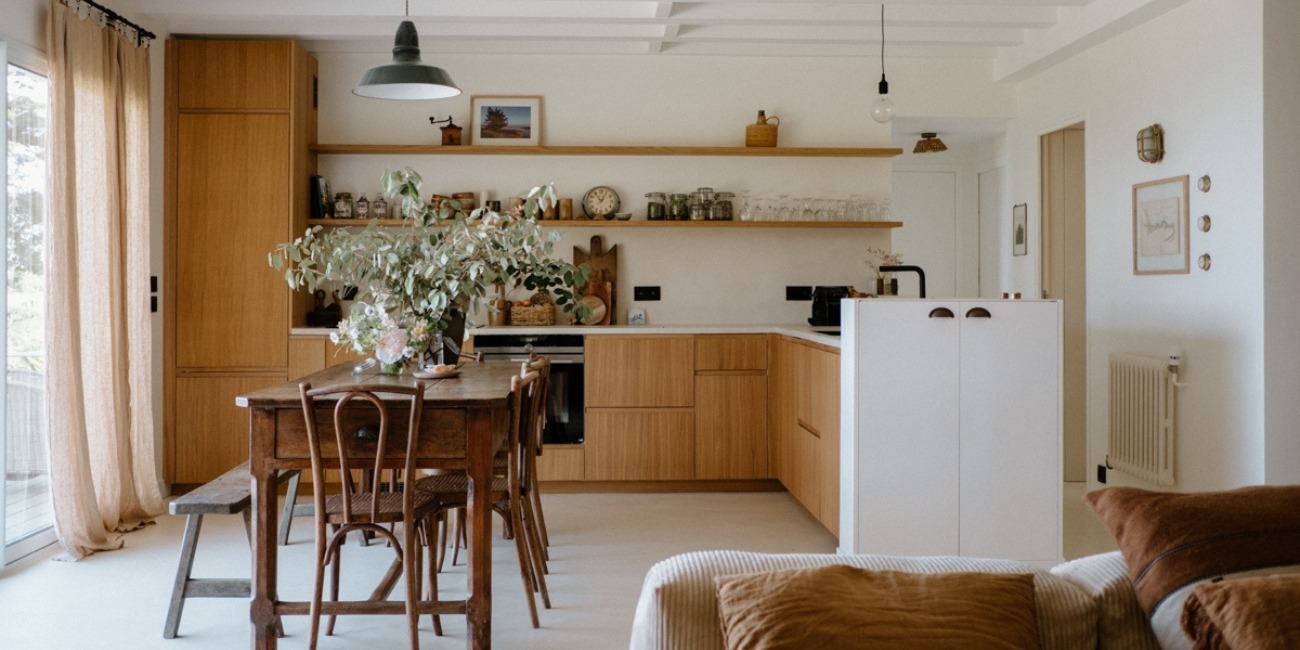
Step 3: Put you in touch with a professional
The Marius Aurenti distributor or team will put you in touch with a building professional, craftsman or qualified company. This professional will have undergone Marius Aurenti training specialized in the application of micro concrete.
Carefully selected, these teams are trained and keep their knowledge up to date, and offer the guarantees and insurances of building professionals.
Technical and aesthetic mastery are here to make your project a beautiful reality!
It is these professionals who will draw up an estimate for the job, including the cost of the products and their installation. It’s sometimes possible to make a comparison between several companies, which allows you to compare rates and also find the human relationship that’s right for you.
Step 4: Choose your style and color!
It’s an enjoyable part of the job, but you need to take your time.
Rest assured, for more than 25 years, all colors have been priced the same. With the laboratory, colorist and specific spectrophotometer, Marius Aurenti also creates customized shades for certain projects. You can create your own color signature.
Visit showrooms and distributors to see material displays. This will enable you to better appreciate a color in real life, touch the warm, pleasant material of micro concrete and define its texture (more or less smooth, depending on its intended use) and appearance (plain and soft, or with more or less accentuated mottling).
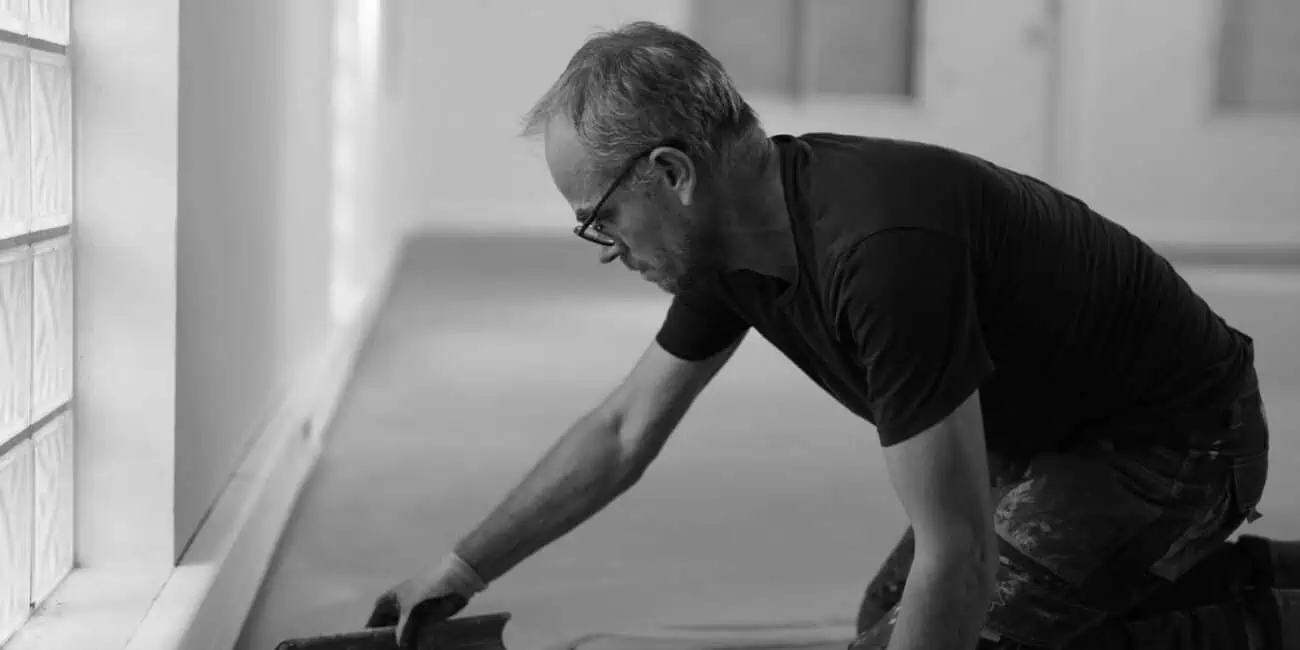
Step 5: On the job!
Once the detailed estimate and general terms and conditions of sale have been validated, you usually define the schedule with the craftsman, who then locks the project into his schedule and orders the materials required for its completion.
He will also coordinate his work with the various site players, who generally include the architect, screed maker, plasterer, painter, electrician and plumber.
He will define his requirements and the quality of substrate preparation needed to complete his work.
Approved companies usually ask you to make a deposit at this stage. On major projects, an interim invoice will be issued and/or a balance will be paid on acceptance of the project. Throughout this process, the contractual relationship is between you and the company you have chosen.
The qualified company will take care of the ordering and payment of materials directly with Marius Aurenti, a long-standing collaboration in most cases.
However, our sales advisors are on hand to answer general questions, guide you towards colors and decorative choices, and send you any technical documents you may need, which can be downloaded free of charge from the site.
It is thanks to this process that, for over 20 years, several thousand projects have been successfully carried out every year in some twenty countries.
Marius Aurenti supports companies with tools to help them get a good feel for the supports before they work on them, practical guides for exchanging ideas with other building professionals, and of course the site acceptance ceremony you do with them at the end.
Step 6: It’s time to enjoy and clean up from time to time!
You’ve done it! Fully appreciate the decorative style of Marius Aurenti micro concrete and the visual pleasure it brings, thanks to its continuous appearance on floor and wall surfaces.
The result is a feeling of infinite space, creating a particularly soothing and elegant ambience.
If there’s the visual sensation, it’s also the touch that makes the difference with other materials, because the sensation is as warm as it can be with limestone or wood. Unlike tiles or resin, which will be cold, the feel underfoot or in the hand is particularly soft, making the exchange with the space even more sensory.
Then, thanks to the exclusive Blush micro-grinding technology, a Marius Aurenti innovation for several years now, the powder pigments create deep, soft colors. These pigments are particularly effective at capturing light and reflecting it around the room.
Marius Aurenti’s solidity and protection, reinforced by more than 40 years of mastery of surface treatments, will enable you to live simply in your own space, whether private or public.
For the maintenance of your Micro Concrete, a range of
cleaning products
adapted to each type of micro concrete project, based on the company’s professional experience. You can order them directly from the
material library
.
At reception, you’ll be given a small guide to help you find out exactly how to maintain your surfaces.
This micro concrete is particularly durable , and the first projects dating back to the late 90s are still in use.
Depending on use, it may be necessary to apply two coats of protective varnish after ten years or so, but this can be done quickly (usually in a day).
